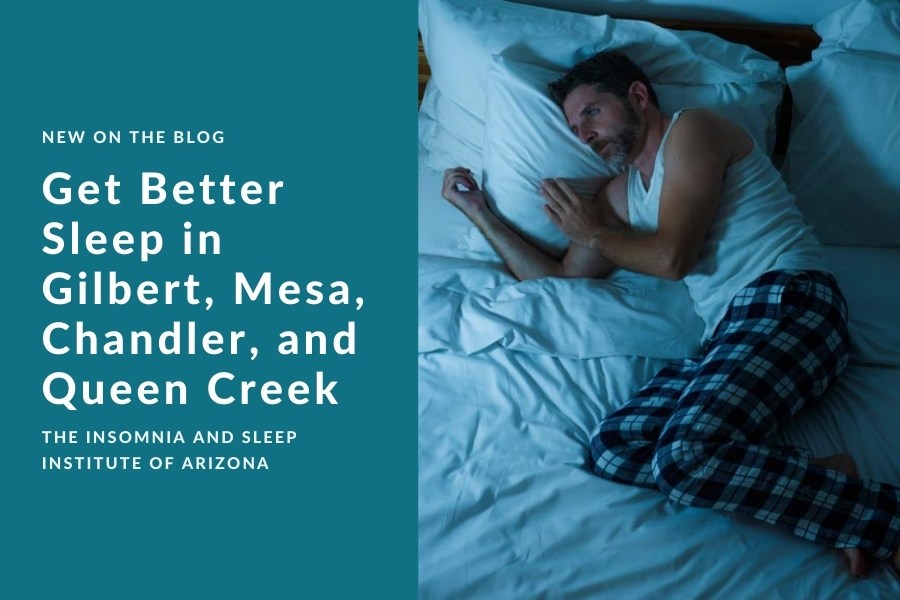Adults and children alike can suffer with sleep disorders, which in turn affects every other part of their lives. That’s why The Insomnia and Sleep Institute of Arizona treats adult and pediatric patients at our offices conveniently located in Gilbert, Mesa, Chandler, and Queen Creek. We set the standard for sleep medicine in Arizona and are proud to be recognized as the “Face of Sleep Medicine” in the Phoenix area, where we have been voted “Top Doc” in the region for the past six years.
Everyone knows sleep is important—but how important? And just how prevalent are sleep disorders? The Sleep Foundation offers a number of statistics that may surprise you and help you realize just how critical quality sleep is for a better quality of life. On average, we experience 4 – 6 sleep cycles per night with REM making up 20 – 25 percent of our total sleep when sleep disorders are not present. Every night, two hours are spent dreaming but, again, that is only in situations where sleep disorders are not present.
How Much Sleep is Enough?
Adults 18 – 64 years old require 7 – 9 hours of sleep per night on average, but every person is unique. Older adults over 65 require 7 – 8 hours on average. However, over 35 percent of adults in the U.S. say that they get less than seven hours of sleep per night on average. Nearly half of these adults say that they are tired during the day at least three days per week (and sometimes seven days). Ethnicity also plays a role in sleep averages. Native Hawaiians/Pacific Islanders report the least amount of sleep followed by Black Americans, Native Americans, Asians, Hispanics, and finally white Americans.
It might be no surprise that 42.6 percent of single parents report sleeping less than seven hours per night. In comparison, 32.7 percent of adults in two-parent homes with children report less than seven hours of sleep while 31 percent of adults without children in the home report under seven hours of sleep. On average, 32.6 percent of adults who work say they sleep less than six hours per night on average, which according to the Sleep Foundation is an increase in 28.4 percent when compared to the 2008 – 2009 numbers.
Sleep Facts in Gilbert
As we can see, working adults sleep less on average but the type of job a person has also plays a role. Over 44 percent of people who work in production or factories get under seven hours of sleep per night. Those who are in active duty in the military are 34 percent more likely to report “insufficient sleep” compared to those who have never served.
On average, 10 – 30 percent of adults have chronic insomnia, with these figures ranging so widely due to all sleep disorders being typically under-reported. This is mainly because people simply don’t reach out for help. The Sleep Foundation estimates that up to 48 percent of adults could actually be struggling with insomnia. Women are 40 percent more likely to have insomnia. Obstructive sleep apnea (OSA) is estimated to occur in 15 – 30 percent of males and 10 – 30 percent of females. The risk of OSA increases six-fold for those who experience a 10 percent increase in body weight.
Sleep Disorder Statistics
The Sleep Foundation estimates that just under one percent of adults 40+ have central sleep apnea, the less common form of sleep apnea. However, restless legs syndrome (RLS) is estimated to occur in 5 – 10 percent of adults and up to four percent of children. There are also 135,000 – 200,000 people in the U.S. struggling with narcolepsy.
Around 66 percent of people will talk in their sleep at some point, but just 17 percent report it happening in the past three months. Sleepwalking is said to occur in 5 percent of children and 1.5 percent of adults in the last year. Finally, about 8 percent of people report sleep paralysis at any point during their life.
How Our Sleep Habits Shape Up
Sleep can be disturbed by many things, which is why it’s so important to only work with a sleep specialist to get a diagnosis followed by testing and treatment. Bladder activity can impact our sleep no matter our age, with 69 percent of men and 76 percent of women saying they get up to use the restroom at least once per night. Those who work evening or overnight shifts particularly struggle with sleep, and they make up 16 percent of full-time workers in the country. Of course, sleep disorders can also interrupt the sleep you need.
If you’re challenged by poor quality sleep, get the help you need. Schedule a consultation with The Insomnia and Sleep Institute by completing the online form now.





